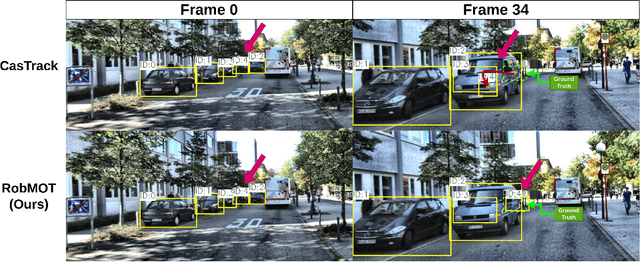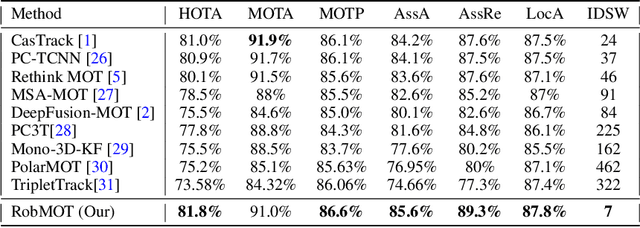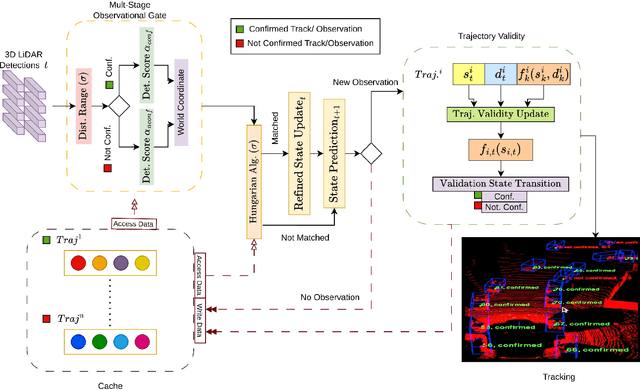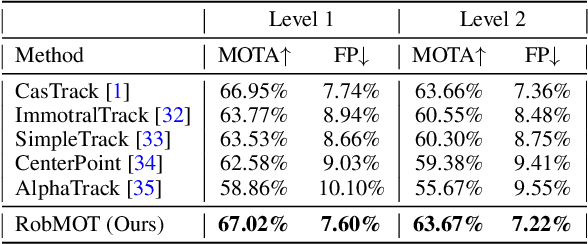Naoufel Werghi
DyCON: Dynamic Uncertainty-aware Consistency and Contrastive Learning for Semi-supervised Medical Image Segmentation
Apr 06, 2025Abstract:Semi-supervised learning in medical image segmentation leverages unlabeled data to reduce annotation burdens through consistency learning. However, current methods struggle with class imbalance and high uncertainty from pathology variations, leading to inaccurate segmentation in 3D medical images. To address these challenges, we present DyCON, a Dynamic Uncertainty-aware Consistency and Contrastive Learning framework that enhances the generalization of consistency methods with two complementary losses: Uncertainty-aware Consistency Loss (UnCL) and Focal Entropy-aware Contrastive Loss (FeCL). UnCL enforces global consistency by dynamically weighting the contribution of each voxel to the consistency loss based on its uncertainty, preserving high-uncertainty regions instead of filtering them out. Initially, UnCL prioritizes learning from uncertain voxels with lower penalties, encouraging the model to explore challenging regions. As training progress, the penalty shift towards confident voxels to refine predictions and ensure global consistency. Meanwhile, FeCL enhances local feature discrimination in imbalanced regions by introducing dual focal mechanisms and adaptive confidence adjustments into the contrastive principle. These mechanisms jointly prioritizes hard positives and negatives while focusing on uncertain sample pairs, effectively capturing subtle lesion variations under class imbalance. Extensive evaluations on four diverse medical image segmentation datasets (ISLES'22, BraTS'19, LA, Pancreas) show DyCON's superior performance against SOTA methods.
STING-BEE: Towards Vision-Language Model for Real-World X-ray Baggage Security Inspection
Apr 03, 2025Abstract:Advancements in Computer-Aided Screening (CAS) systems are essential for improving the detection of security threats in X-ray baggage scans. However, current datasets are limited in representing real-world, sophisticated threats and concealment tactics, and existing approaches are constrained by a closed-set paradigm with predefined labels. To address these challenges, we introduce STCray, the first multimodal X-ray baggage security dataset, comprising 46,642 image-caption paired scans across 21 threat categories, generated using an X-ray scanner for airport security. STCray is meticulously developed with our specialized protocol that ensures domain-aware, coherent captions, that lead to the multi-modal instruction following data in X-ray baggage security. This allows us to train a domain-aware visual AI assistant named STING-BEE that supports a range of vision-language tasks, including scene comprehension, referring threat localization, visual grounding, and visual question answering (VQA), establishing novel baselines for multi-modal learning in X-ray baggage security. Further, STING-BEE shows state-of-the-art generalization in cross-domain settings. Code, data, and models are available at https://divs1159.github.io/STING-BEE/.
EMT: A Visual Multi-Task Benchmark Dataset for Autonomous Driving in the Arab Gulf Region
Feb 26, 2025Abstract:This paper introduces the Emirates Multi-Task (EMT) dataset - the first publicly available dataset for autonomous driving collected in the Arab Gulf region. The EMT dataset captures the unique road topology, high traffic congestion, and distinctive characteristics of the Gulf region, including variations in pedestrian clothing and weather conditions. It contains over 30,000 frames from a dash-camera perspective, along with 570,000 annotated bounding boxes, covering approximately 150 kilometers of driving routes. The EMT dataset supports three primary tasks: tracking, trajectory forecasting and intention prediction. Each benchmark dataset is complemented with corresponding evaluations: (1) multi-agent tracking experiments, focusing on multi-class scenarios and occlusion handling; (2) trajectory forecasting evaluation using deep sequential and interaction-aware models; and (3) intention benchmark experiments conducted for predicting agents intentions from observed trajectories. The dataset is publicly available at https://avlab.io/emt-dataset, and pre-processing scripts along with evaluation models can be accessed at https://github.com/AV-Lab/emt-dataset.
AquaticCLIP: A Vision-Language Foundation Model for Underwater Scene Analysis
Feb 03, 2025



Abstract:The preservation of aquatic biodiversity is critical in mitigating the effects of climate change. Aquatic scene understanding plays a pivotal role in aiding marine scientists in their decision-making processes. In this paper, we introduce AquaticCLIP, a novel contrastive language-image pre-training model tailored for aquatic scene understanding. AquaticCLIP presents a new unsupervised learning framework that aligns images and texts in aquatic environments, enabling tasks such as segmentation, classification, detection, and object counting. By leveraging our large-scale underwater image-text paired dataset without the need for ground-truth annotations, our model enriches existing vision-language models in the aquatic domain. For this purpose, we construct a 2 million underwater image-text paired dataset using heterogeneous resources, including YouTube, Netflix, NatGeo, etc. To fine-tune AquaticCLIP, we propose a prompt-guided vision encoder that progressively aggregates patch features via learnable prompts, while a vision-guided mechanism enhances the language encoder by incorporating visual context. The model is optimized through a contrastive pretraining loss to align visual and textual modalities. AquaticCLIP achieves notable performance improvements in zero-shot settings across multiple underwater computer vision tasks, outperforming existing methods in both robustness and interpretability. Our model sets a new benchmark for vision-language applications in underwater environments. The code and dataset for AquaticCLIP are publicly available on GitHub at xxx.
Multi-Modal Attention Networks for Enhanced Segmentation and Depth Estimation of Subsurface Defects in Pulse Thermography
Jan 17, 2025Abstract:AI-driven pulse thermography (PT) has become a crucial tool in non-destructive testing (NDT), enabling automatic detection of hidden anomalies in various industrial components. Current state-of-the-art techniques feed segmentation and depth estimation networks compressed PT sequences using either Principal Component Analysis (PCA) or Thermographic Signal Reconstruction (TSR). However, treating these two modalities independently constrains the performance of PT inspection models as these representations possess complementary semantic features. To address this limitation, this work proposes PT-Fusion, a multi-modal attention-based fusion network that fuses both PCA and TSR modalities for defect segmentation and depth estimation of subsurface defects in PT setups. PT-Fusion introduces novel feature fusion modules, Encoder Attention Fusion Gate (EAFG) and Attention Enhanced Decoding Block (AEDB), to fuse PCA and TSR features for enhanced segmentation and depth estimation of subsurface defects. In addition, a novel data augmentation technique is proposed based on random data sampling from thermographic sequences to alleviate the scarcity of PT datasets. The proposed method is benchmarked against state-of-the-art PT inspection models, including U-Net, attention U-Net, and 3D-CNN on the Universit\'e Laval IRT-PVC dataset. The results demonstrate that PT-Fusion outperforms the aforementioned models in defect segmentation and depth estimation accuracies with a margin of 10%.
BENet: A Cross-domain Robust Network for Detecting Face Forgeries via Bias Expansion and Latent-space Attention
Dec 10, 2024Abstract:In response to the growing threat of deepfake technology, we introduce BENet, a Cross-Domain Robust Bias Expansion Network. BENet enhances the detection of fake faces by addressing limitations in current detectors related to variations across different types of fake face generation techniques, where ``cross-domain" refers to the diverse range of these deepfakes, each considered a separate domain. BENet's core feature is a bias expansion module based on autoencoders. This module maintains genuine facial features while enhancing differences in fake reconstructions, creating a reliable bias for detecting fake faces across various deepfake domains. We also introduce a Latent-Space Attention (LSA) module to capture inconsistencies related to fake faces at different scales, ensuring robust defense against advanced deepfake techniques. The enriched LSA feature maps are multiplied with the expanded bias to create a versatile feature space optimized for subtle forgeries detection. To improve its ability to detect fake faces from unknown sources, BENet integrates a cross-domain detector module that enhances recognition accuracy by verifying the facial domain during inference. We train our network end-to-end with a novel bias expansion loss, adopted for the first time, in face forgery detection. Extensive experiments covering both intra and cross-dataset demonstrate BENet's superiority over current state-of-the-art solutions.
Reconstructing Deep Neural Networks: Unleashing the Optimization Potential of Natural Gradient Descent
Dec 10, 2024Abstract:Natural gradient descent (NGD) is a powerful optimization technique for machine learning, but the computational complexity of the inverse Fisher information matrix limits its application in training deep neural networks. To overcome this challenge, we propose a novel optimization method for training deep neural networks called structured natural gradient descent (SNGD). Theoretically, we demonstrate that optimizing the original network using NGD is equivalent to using fast gradient descent (GD) to optimize the reconstructed network with a structural transformation of the parameter matrix. Thereby, we decompose the calculation of the global Fisher information matrix into the efficient computation of local Fisher matrices via constructing local Fisher layers in the reconstructed network to speed up the training. Experimental results on various deep networks and datasets demonstrate that SNGD achieves faster convergence speed than NGD while retaining comparable solutions. Furthermore, our method outperforms traditional GDs in terms of efficiency and effectiveness. Thus, our proposed method has the potential to significantly improve the scalability and efficiency of NGD in deep learning applications. Our source code is available at https://github.com/Chaochao-Lin/SNGD.
CPLIP: Zero-Shot Learning for Histopathology with Comprehensive Vision-Language Alignment
Jun 07, 2024



Abstract:This paper proposes Comprehensive Pathology Language Image Pre-training (CPLIP), a new unsupervised technique designed to enhance the alignment of images and text in histopathology for tasks such as classification and segmentation. This methodology enriches vision-language models by leveraging extensive data without needing ground truth annotations. CPLIP involves constructing a pathology-specific dictionary, generating textual descriptions for images using language models, and retrieving relevant images for each text snippet via a pre-trained model. The model is then fine-tuned using a many-to-many contrastive learning method to align complex interrelated concepts across both modalities. Evaluated across multiple histopathology tasks, CPLIP shows notable improvements in zero-shot learning scenarios, outperforming existing methods in both interpretability and robustness and setting a higher benchmark for the application of vision-language models in the field. To encourage further research and replication, the code for CPLIP is available on GitHub at https://cplip.github.io/
Video Anomaly Detection in 10 Years: A Survey and Outlook
May 29, 2024



Abstract:Video anomaly detection (VAD) holds immense importance across diverse domains such as surveillance, healthcare, and environmental monitoring. While numerous surveys focus on conventional VAD methods, they often lack depth in exploring specific approaches and emerging trends. This survey explores deep learning-based VAD, expanding beyond traditional supervised training paradigms to encompass emerging weakly supervised, self-supervised, and unsupervised approaches. A prominent feature of this review is the investigation of core challenges within the VAD paradigms including large-scale datasets, features extraction, learning methods, loss functions, regularization, and anomaly score prediction. Moreover, this review also investigates the vision language models (VLMs) as potent feature extractors for VAD. VLMs integrate visual data with textual descriptions or spoken language from videos, enabling a nuanced understanding of scenes crucial for anomaly detection. By addressing these challenges and proposing future research directions, this review aims to foster the development of robust and efficient VAD systems leveraging the capabilities of VLMs for enhanced anomaly detection in complex real-world scenarios. This comprehensive analysis seeks to bridge existing knowledge gaps, provide researchers with valuable insights, and contribute to shaping the future of VAD research.
RobMOT: Robust 3D Multi-Object Tracking by Observational Noise and State Estimation Drift Mitigation on LiDAR PointCloud
May 19, 2024



Abstract:This work addresses the inherited limitations in the current state-of-the-art 3D multi-object tracking (MOT) methods that follow the tracking-by-detection paradigm, notably trajectory estimation drift for long-occluded objects in LiDAR point cloud streams acquired by autonomous cars. In addition, the absence of adequate track legitimacy verification results in ghost track accumulation. To tackle these issues, we introduce a two-fold innovation. Firstly, we propose refinement in Kalman filter that enhances trajectory drift noise mitigation, resulting in more robust state estimation for occluded objects. Secondly, we propose a novel online track validity mechanism to distinguish between legitimate and ghost tracks combined with a multi-stage observational gating process for incoming observations. This mechanism substantially reduces ghost tracks by up to 80\% and improves HOTA by 7\%. Accordingly, we propose an online 3D MOT framework, RobMOT, that demonstrates superior performance over the top-performing state-of-the-art methods, including deep learning approaches, across various detectors with up to 3.28\% margin in MOTA and 2.36\% in HOTA. RobMOT excels under challenging conditions, such as prolonged occlusions and the tracking of distant objects, with up to 59\% enhancement in processing latency.
 Add to Chrome
Add to Chrome Add to Firefox
Add to Firefox Add to Edge
Add to Edge